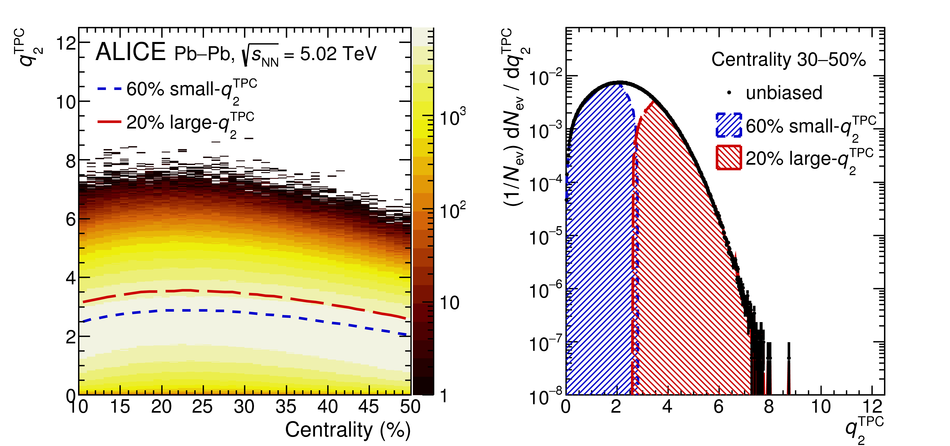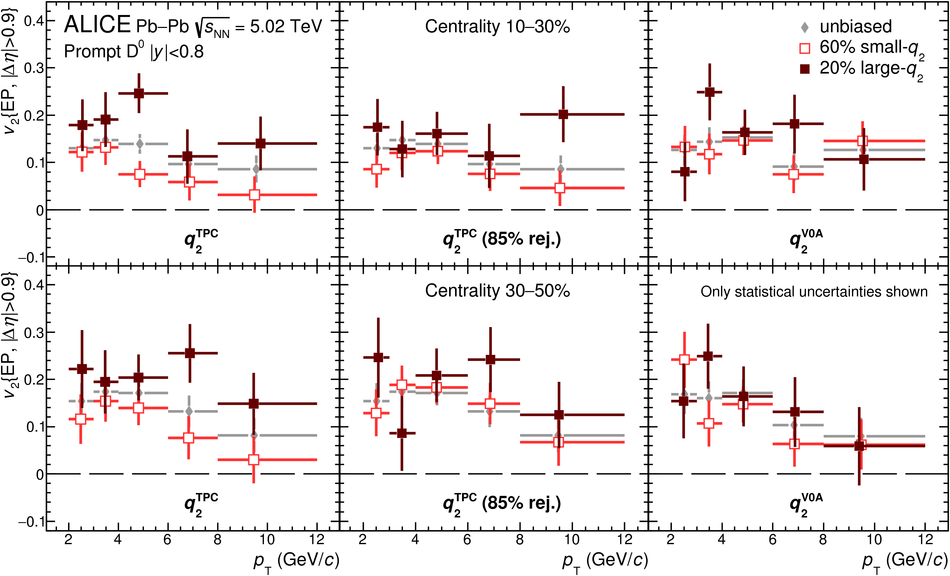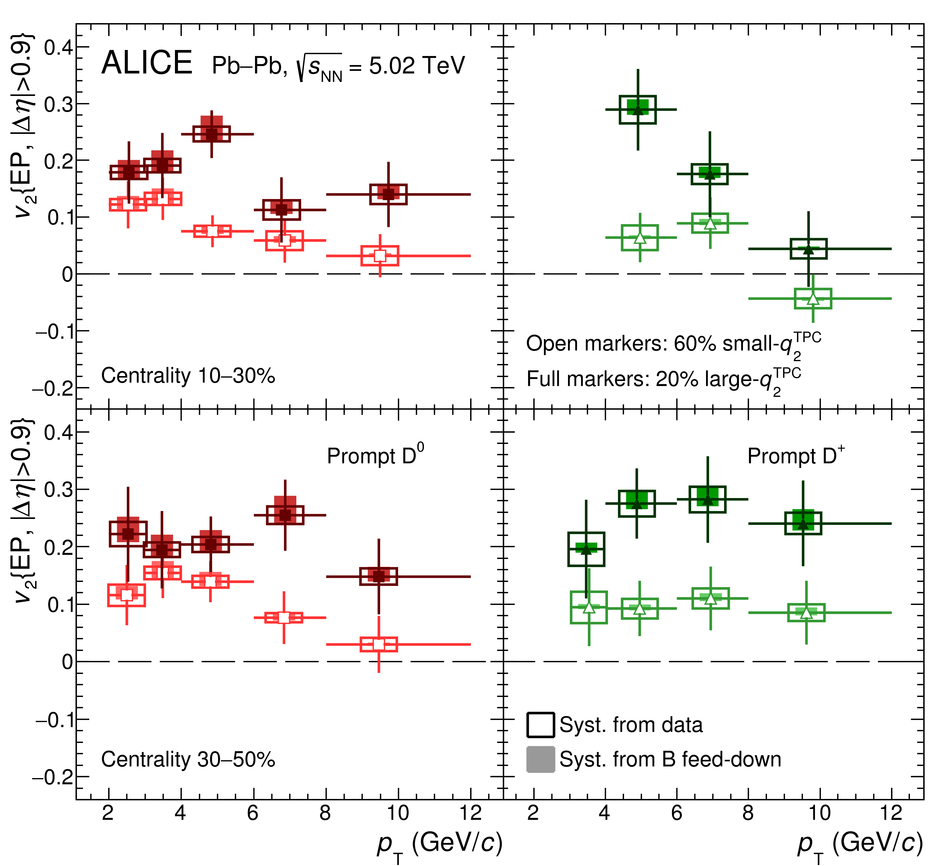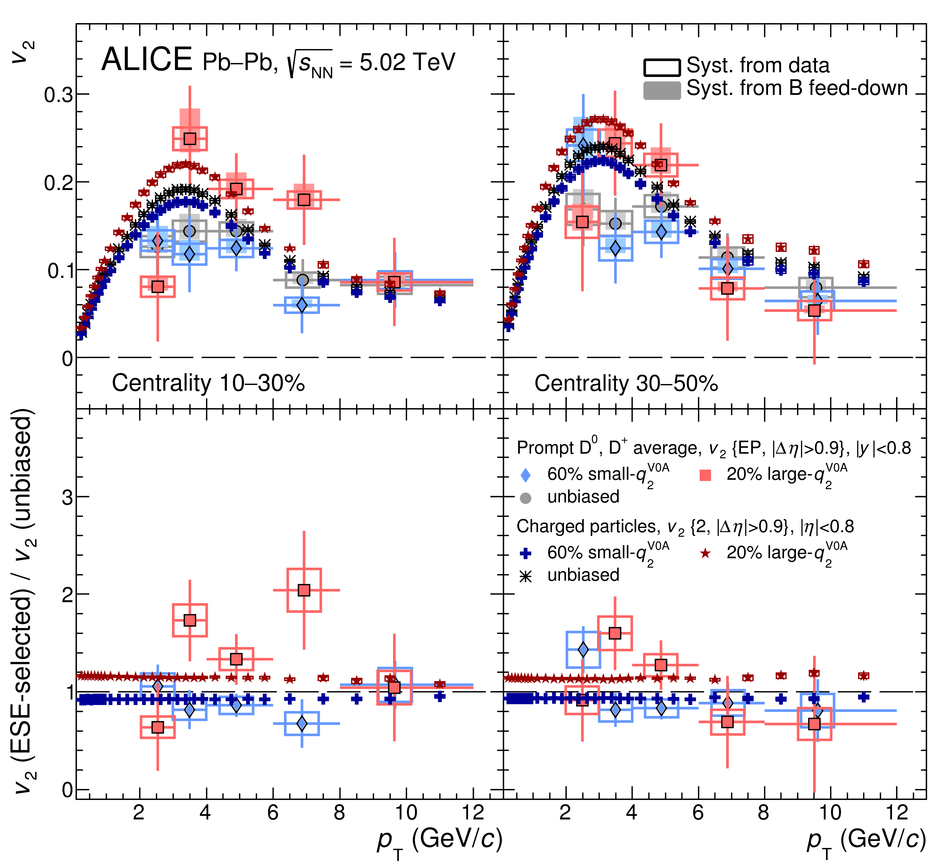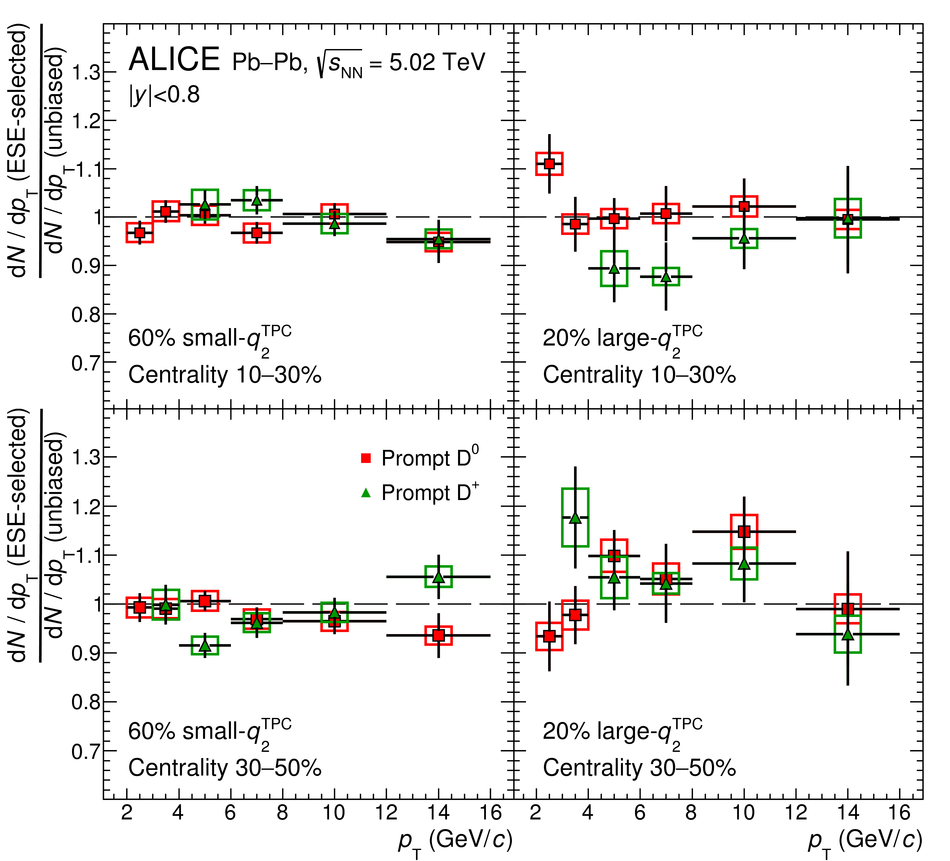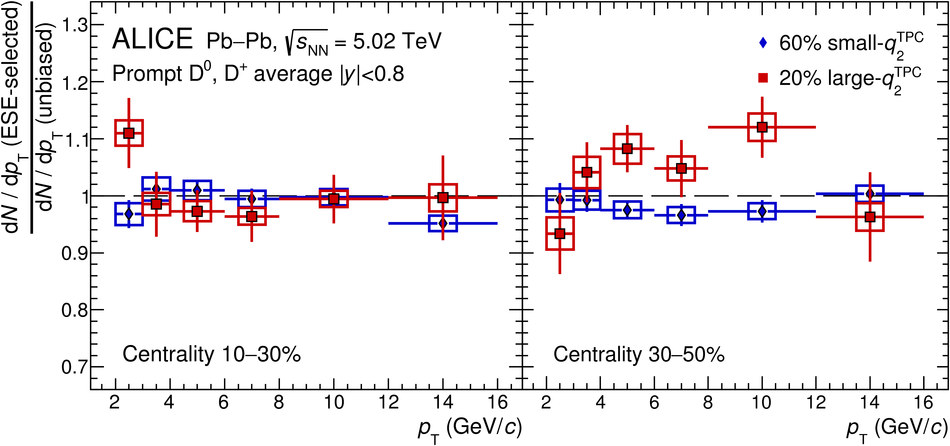The production yield of prompt D mesons and their elliptic flow coefficient $v_2$ were measured with the Event-Shape Engineering (ESE) technique applied to mid-central (10-30% and 30-50% centrality classes) Pb-Pb collisions at the centre-of-mass energy per nucleon pair $\sqrt{s_{\rm NN}} =5.02$ TeV, with the ALICE detector at the LHC. The ESE technique allows the classification of events, belonging to the same centrality, according to the azimuthal anisotropy of soft particle production in the collision. The reported measurements give the opportunity to investigate the dynamics of charm quarks in the Quark-Gluon Plasma and provide information on their participation in the collective expansion of the medium. D mesons were reconstructed via their hadronic decays at mid-rapidity, $|\eta|<~0.8$, in the transverse momentum interval $1<~p_{\rm T}<~24$ GeV/$c$. The $v_2$ coefficient is found to be sensitive to the event-shape selection confirming a correlation between the D-meson azimuthal anisotropy and the collective expansion of the bulk matter, while the per-event D-meson yields do not show any significant modification within the current uncertainties.
JHEP 02 (2019) 150
HEP Data
e-Print: arXiv:1809.09371 | PDF | inSPIRE
CERN-EP-2018-260

